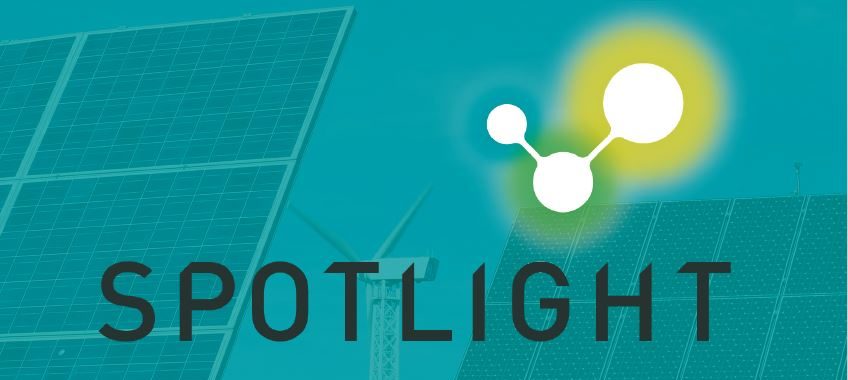We are participating in a new H2020 project that will develop innovative photonic devices for highly efficient chemical processes powered by sunlight called SPOTLIGHT funded
with 5,604,958.75 euros.
The sun is a valuable source of energy. It can be used to produce electricity, but it can also be stored in complex chemical molecules: solar energy makes it possible to convert raw materials such as carbon dioxide (CO2) and water into clean alternative fuels. These fuels are equivalent in terms of functionality to fossil fuels, so they can be easily adopted by existing users, through existing infrastructure. The big difference is that solar fuels provide a reduction in greenhouse gas emissions (in particular CO2), which is greater than that of biofuels.
In the framework of SPOTLIGHT, universities and companies join forces to develop a photonic device that facilitates the efficient conversion of CO2 and green H2 into the chemical fuel CH4 (Sabatier process) and CO (reverse water gas shift process, rWGS) as a starting material for the production of the chemical fuel CH3OH. Although the technology for creating solar fuels is well known in the scientific community, there are still open challenges in bringing it to industrial scale, large-scale production. The main technical challenges that currently need to be addressed are:
– Efficiency: the higher the fraction of sunlight that can be used to create chemicals, the fewer materials and feedstocks are needed;
– Durability: materials degrade due to exposure to sunlight and this has an impact on the efficiency and cost of the process;
– Costs: process costs must be kept as low as possible to be comparable to typical fossil fuel costs;
– Industrial synergy: one of the key conditions for the process to be sustainable is industrial synergy between solar fuel producers and industry that can provide feedstock (e.g. as by-products).
Consequently, the current research scenario for solar fuels focuses mainly on three macro-themes: the chemical reactor, solar optics and catalysts.
In this context, the key objective of SPOTLIGHT is to develop and validate a photonic device and a chemical process concept for the conversion by sunlight of the unwanted greenhouse gas CO2 and green H2 into the chemical fuel CH4, and into CO as a starting material for the production of the chemical fuel CH3OH. This will allow EU companies in the photonics and chemical industry to take the lead in creating a multi-billion dollar industry related to sunlight-driven chemical processes, and enables the EU to reduce its dependence on non-EU countries and regions for its energy supply.
SPOTLIGHT will ensure a disruptive breakthrough on these issues, thanks to the development of:
– A transparent flow reactor adapted for Sabatier fed by sunlight with gaseous starting materials and products, and solid packed-bed plasmonic catalysts capable of coping with p ≤ 20 bar and reactor T ≤ 250°C;
– Secondary solar optics for sunlight-fed chemical processes with a solar concentration factor ≤ 20 and plate reactors – Energy efficient LED light source as a solution to ensure continuous operation of sunlight-fed plasmonic catalytic reactions.
– LED light source with tunable medium to high luminous intensity (between 1 and 20 kW-m-2) AND broad spectrum emission (between 350 and 2500 nm) AND high energy efficiency from electricity to radiation of ≥ 50%;
– Newly developed plasmonic nanocatalysts with tailored optical and catalytic properties and high spatial efficiency.
SPOTLIGHT will be preliminarily tested at the facilities of TNO – the project coordinator – and then transferred to the DLR facilities for comprehensive use and validation. In addition, a further study will be carried out to verify the conditions for replicating the process in other environments and in synergy with different industrial contexts. The SPOTLIGHT project consortium consists of 12 international partners: TNO (The Netherlands) as coordinator, RINA (Italy), UHASSELT (Belgium), IMEC (Belgium), ETH (Germany), The Nanophotonic systems laboratory (Germany), CHEMTRIX (The Netherlands), Signify (The Netherlands). DLR (Germany), EPFL (Switzerland), FRAUNHOFER (Germany), ACEA (Italy) and Fundación del Hidrógeno de Aragón (Spain).

